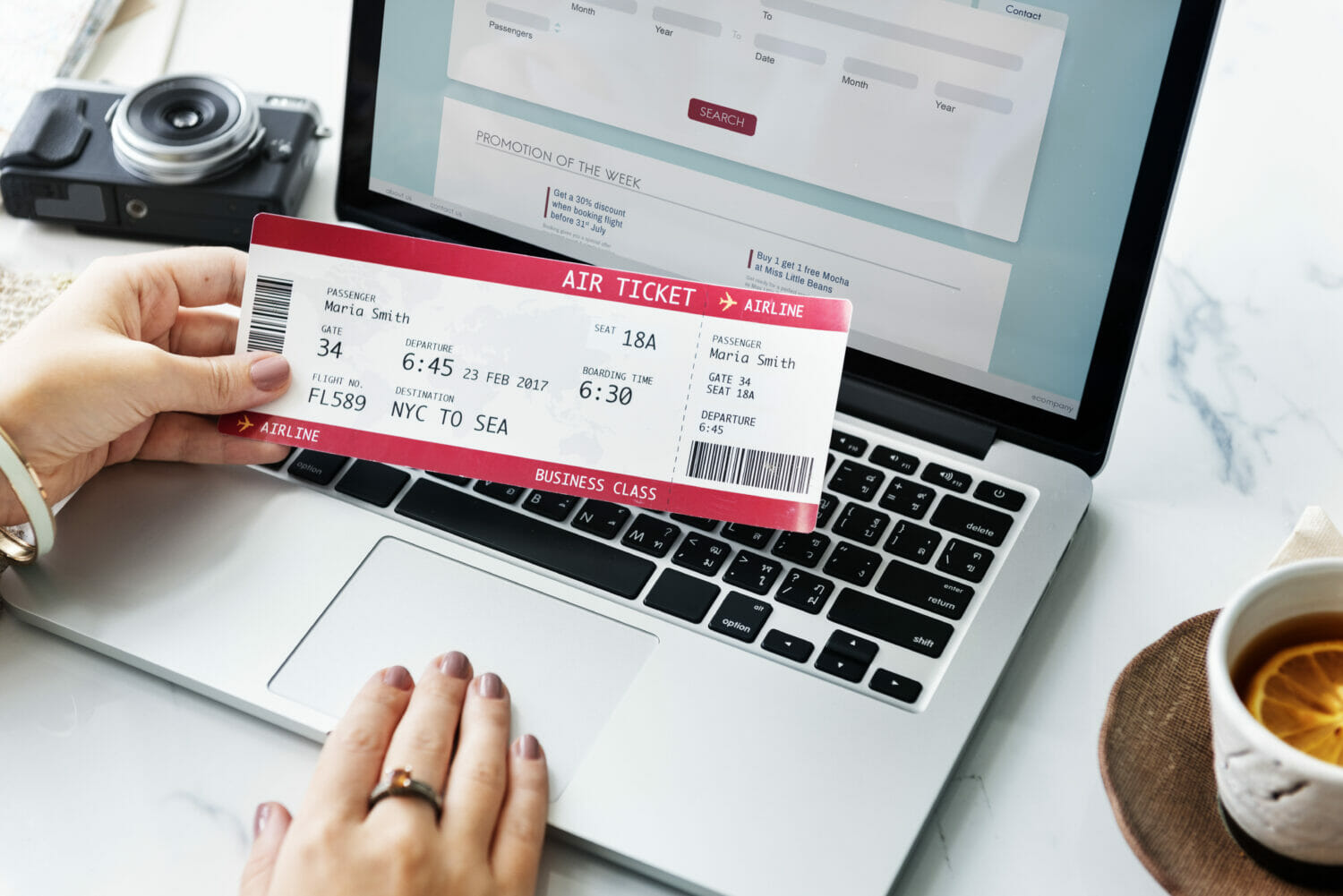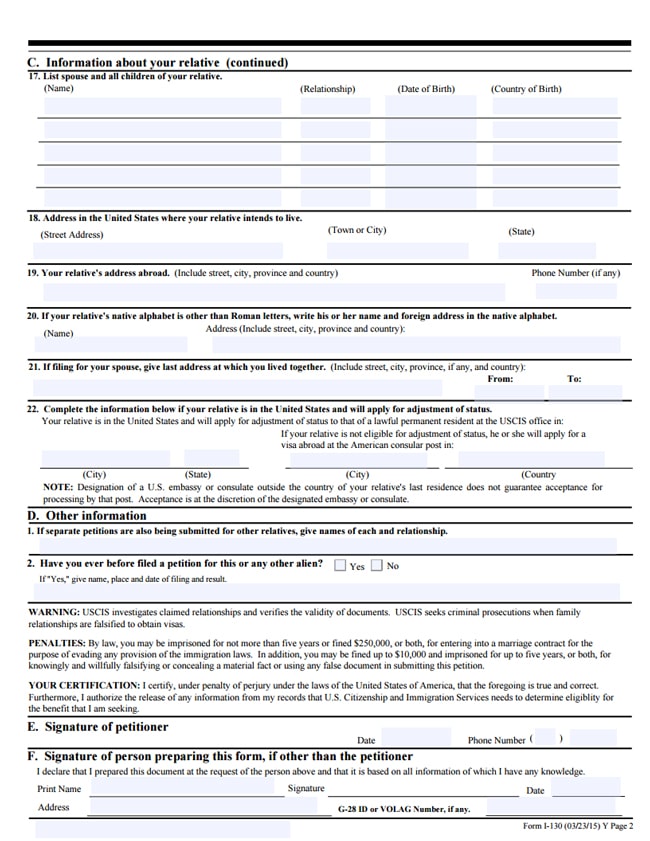Gain an advantage when applying for your fiancé visa
It’s true: most people who apply for a K-1 visa are successful. In fact, according to statistical reports published by U.S. Citizenship and Immigration Services (USCIS), about 74% of fiancé(e) visas were approved in 2020.
Nonetheless, it’s totally understandable if you’re worried about the final outcome of your application. So perhaps the first tip — a pre-tip, if you will — should be to just breathe. For the most part, as long as you and your partner meet the requirements of the K-1 application process, you have nothing to worry about.
That being said, you don’t want to risk your application being denied due to a simple lack of preparation. To help you move through the application process with confidence, the following blog post will provide 7 must-know tips.
1. Gather Sufficient Evidence
While you may know you’re in a good faith relationship, the person looking at your application has no idea. For this reason, you should diligently gather evidence that substantiates the validity of your relationship. Specifically, you’ll need to show that you and your partner have met, in person, at least once within the past two years. To avoid any delays in the application process, it might be a good idea to air on the side of “too much” information. Evidence might include:
- Photographs (dated, if possible)
- Flight or hotel Itineraries
- Written testimony provided by friends, family, or colleagues
- Any correspondence between you and your partner
In addition to proving the actuality of your relationship, you’ll also need to provide evidence showing that:
- The sponsoring partner is a U.S. citizen
- You are both eligible to legally marry, meaning all previous marriages have officially ended
- You have a real intent to marry within 90 days of arriving in the United States (evidence should include a signed statement from each partner declaring their intent to marry and any documents you may have related to the event itself)
- The sponsoring petitioner has an income equal to, at least, 100% of the Federal Poverty Guidelines
For a more thorough breakdown of the K-1 eligibility requirements, checkout Boundless’ detailed explanation of the fiancé(e) visa process.
2. Disclose Any Information Required by IMBRA
In 2005, following the tragic deaths of two women who entered the United States on marriage-based visas, the U.S. government instituted the International Marriage Broker Regulation Act (IMBRA, or “the Act”), providing protection to those who intend to marry using a broker.
Among other things, the Act requires that, if the couple met through a brokerage service, they must disclose this information to USCIS, who will then determine whether the service meets certain criteria. What’s more, if the sponsor has ever committed a violent crime, sexual or otherwise, they may be barred from receiving a K-1 visa.
If you intend to marry using a broker, be sure to disclose all the necessary information. Even if you make it through the K-1 application process without disclosing, you could end up facing serious consequences when you or your partner applies for a marriage green card. To learn more about IMBRA, read Boundless’ in-depth article on the subject.
3. Prepare for the Interview
After submitting the initial paperwork (Form I-129F), USCIS could take as long as 10 months to give its approval. Within 30 days following the initial approval, the sponsored fiancé(e) will receive a notice informing them of the date and location of the upcoming interview, in addition to a list of all the necessary documents.
It’s very important that you prepare for this interview by gathering all the required documents and considering any potential questions that might arise. Again, if you’re in a serious, well-intentioned relationship, you have nothing to worry about. The questions should be fairly straightforward for the most part.
They might ask, for instance, about the sponsored fiancé(e)’s previous marriages, nationality, work status, history of travel to the United States, or criminal history. To prove whether the relationship is real, the immigration officer might ask the U.S. sponsor about their partner’s hobbies, eye color, age, residence, and background. It’s a good idea to prepare for these types of questions prior to your interview.
4. Stay Flexible
Given the uncertainty surrounding the application timeline, it’s a good idea to remain flexible with respect to your wedding plans. Once the sponsored fiancé(e) arrives on U.S. soil, you have 90 days to get married. Needless to say, that’s not a lot of time, and you want to be ready for any unforeseen hurdles during the process.
In this regard, you should consider planning a simple wedding that will allow for a certain amount of flexibility. Remember, you can always plan a larger reception after the initial ceremony.
5. Triple Check Your Finances
As mentioned above, the sponsoring partner will need to show that they make at least 100% of the Federal Poverty Guidelines. So you want to be absolutely certain that you meet these financial criteria and that you can substantiate your income before applying.
This means you will want to save paystubs or any other record of income in order to prove that you make a sufficient amount of money. As of 2021, a household of 2 people must make a minimum of $17,420 per year. If you don’t earn a sufficient income, a joint financial sponsor may submit an affidavit of support.
6. Monitor Your Social Media Output
In the age of digital surveillance, it may go without saying that anything you put out on the web is fair game. That is, your social media presence could be used by the Department of Homeland Security (DHS) to determine whether your relationship is an authentic one. Thus, you want to be sure that the story you’re telling in your application is consistent with the story being told on your social media accounts.
Petitioners have been confronted by immigration officers simply because the applicant’s social media profile contained (purportedly) contradictory information. For this reason, be sure to thoroughly check your Facebook, Twitter, Instagram, and any other platform you use, for any posts that might undermine the veracity of your application.
7. Fill Out All Necessary Forms
Form I-129F initiates the K-1 visa application process, but it is only one form among others that you will need to fill out. For instance, once the I-129F is approved, the sponsored fiancé(e) will need to complete the online DS-160 form, otherwise known as the Online Nonimmigrant Visa Application.
But there may be others as well depending on your situation. If the sponsored partner has kids, they will need to submit a K-2 visa application, which will allow the children to come to the United States. And if the newly arrived fiancé(e) would like to work, they will need to submit an Application for Employment Authorization (or Form I-765). It’s advisable to know ahead of time which forms apply to your particular circumstance, so you can start gathering all the necessary documents.
For more information about the various applications that might arise, check out the USCIS web page devoted to K-1 visas. If you’re in need of assistance, we, at Boundless, have joined forces with RapidVisa to help you navigate the sometimes complicated process of obtaining a fiancé(e) visa. Visit the RapidVisa website today to get started.







